If a tire goes flat, avoid further tire and wheel damage by driving slowly to a level place. Turn on the hazard warning flashers.
Caution: Changing a tire can be dangerous. The vehicle
can slip off the jack and roll over or fall on you or other people. You and they could
be badly injured or even killed. Find a level place to change your tire. To help prevent
the vehicle from moving:
To be even more certain the vehicle will not move, you should put blocks at
the front and rear of the tire farthest away from the one being changed. That would
be the tire, on the other side, at the opposite end of the vehicle.

The following steps tell how to use the jack and change a tire.
Removing the Spare Tire and Tools
The equipment you will need is in the trunk.
- Then lift and remove the cover. See Compact Spare Tire for more information about the compact spare tire.
- Remove the spare tire.
- Turn the nut holding the jack counterclockwise and remove it. Then remove the jack and wrench.

Turn the center nut on the compact spare tire cover counterclockwise to remove it.

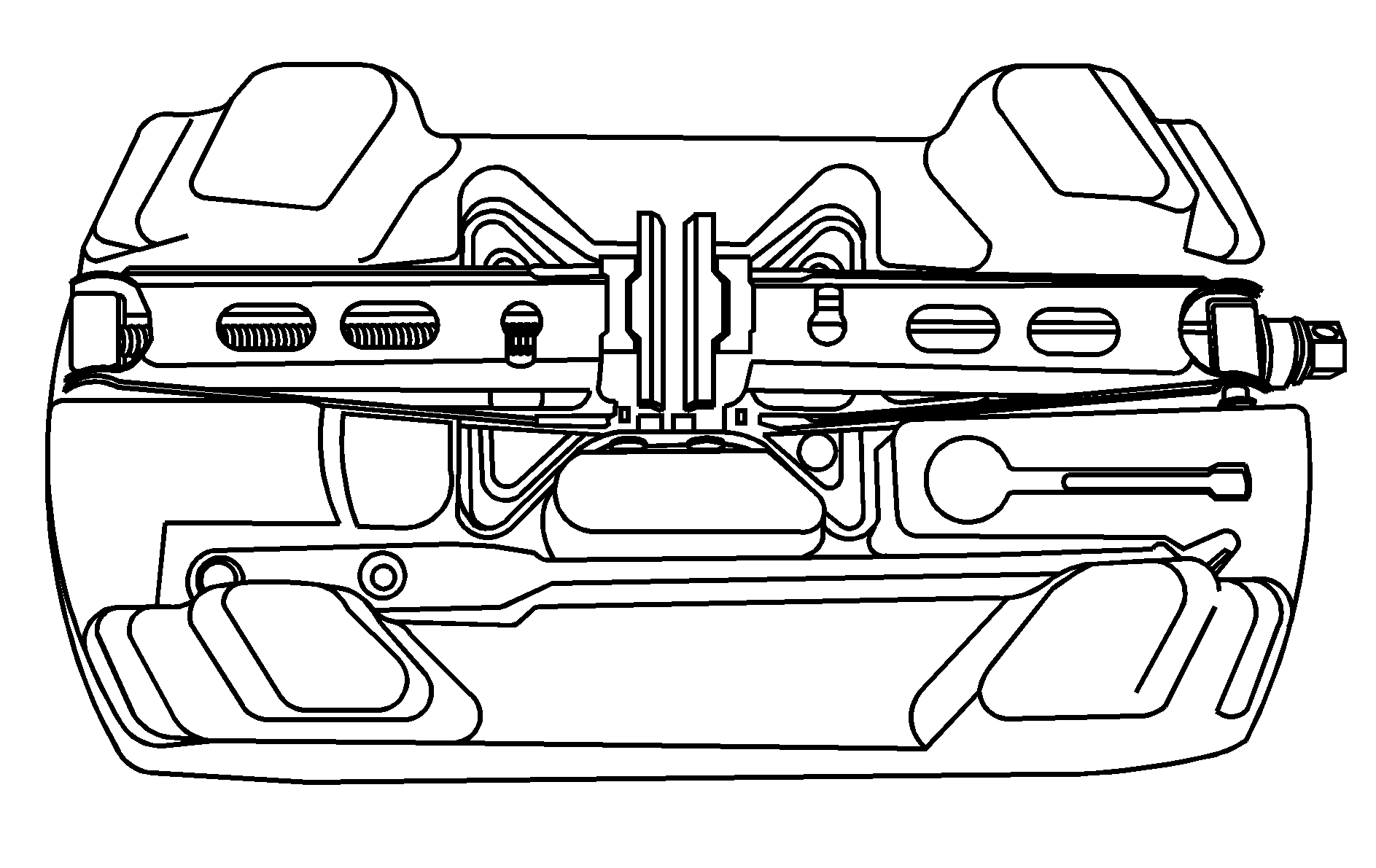
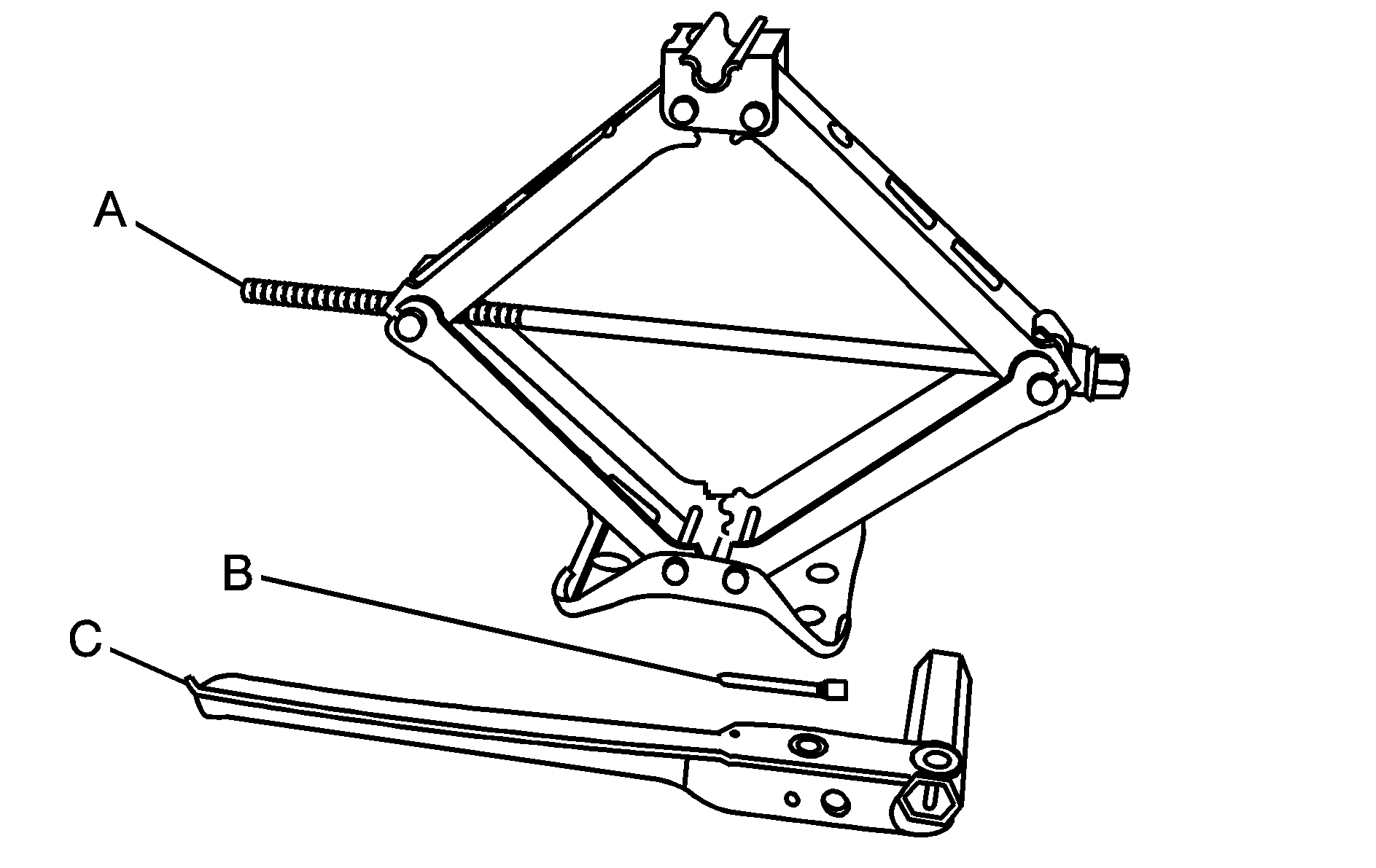
The tools you will be using include the jack (A), extension and protection guide (B) and wheel wrench (C).
Removing the Wheel Covers
If the vehicle has steel wheel covers with center caps, the wheel nuts are hidden behind the cap. To remove the wheel cover, do the following:
- Pry off the center cap by using the flat end of the wheel wrench at the notch on the cap.
- Use the wheel wrench to loosen the plastic wheel nut caps in a counterclockwise direction.
- Use the flat end of the wheel wrench and pry along the edge of the cover until it comes off. Pull off the wheel cover and set it aside.
If needed, finish loosening them by hand. The nut caps will not come off.
The edge of the wheel cover could be sharp, so don't try to remove the cover with your bare hands. Do not drop the cap or lay it face down, as it could become scratched or damaged.
Removing the Wheel Center Caps
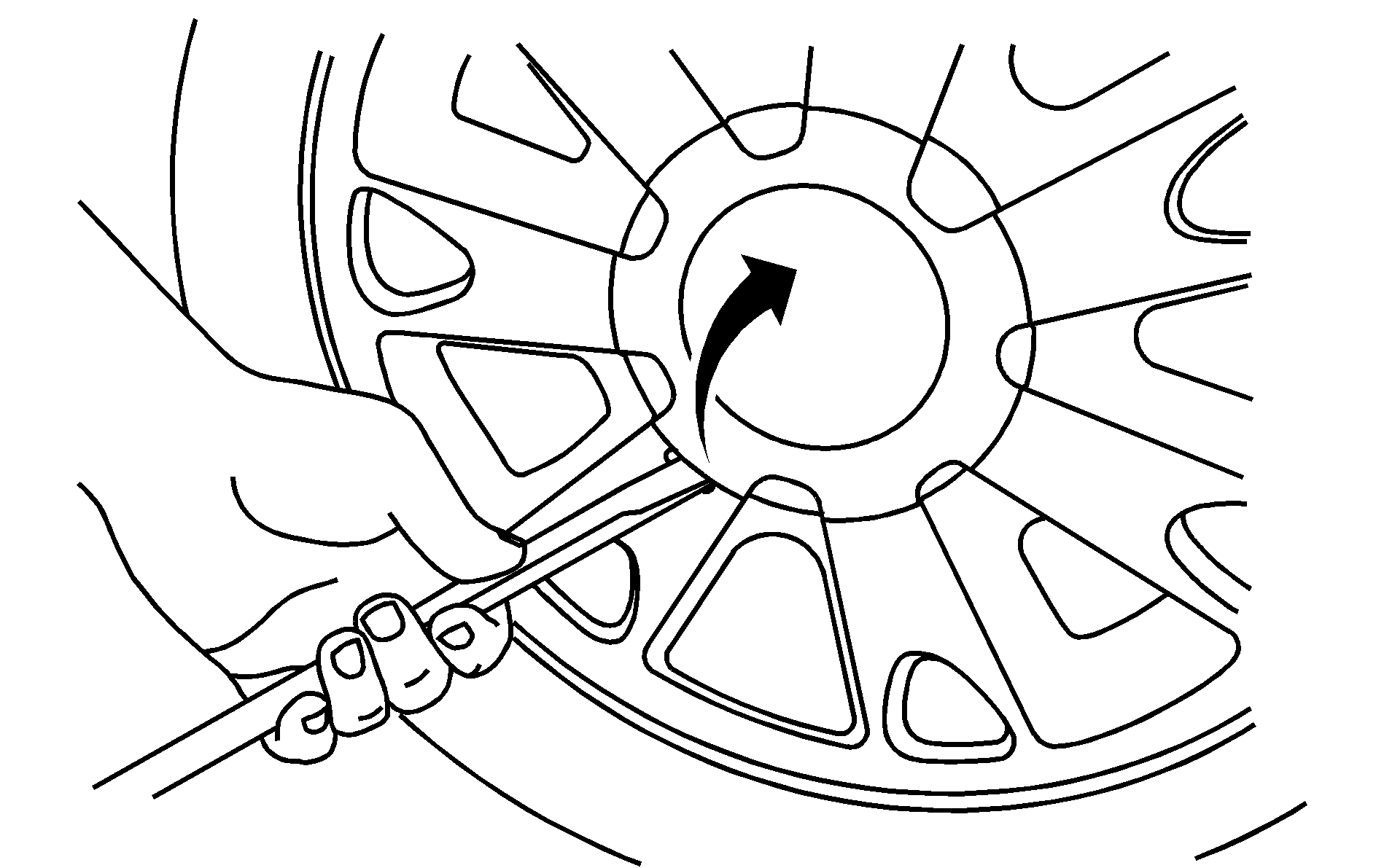
If the vehicle has aluminum wheels and wheel center caps, the wheel nuts are hidden behind the center cap. Pry off the center cap by using the flat end of the wheel wrench at the notch.
Do not drop the cap or lay it facedown, as it could become scratched or damaged.
Removing the Flat Tire and Installing the Spare Tire
- Using the wheel wrench, loosen all the wheel nuts, but do not remove them yet.
- Turn the jack handle clockwise to raise the jack lift head.
- For jacking at the vehicle's front location, put the jack lift head (C) about 6 inches (15 cm) from the rear edge of the front wheel opening (B) or just behind the two bolts (A) as shown.
- For jacking at the vehicle's rear location, put the jack lift head (B) about 5 inches (13 cm) from the front edge of the rear wheel opening (C) or just behind the off-set (A) as shown.
- Put the compact spare tire near you.
- Raise the vehicle by turning the jack handle clockwise. It should be far enough off the ground for the spare compact tire to fit underneath the wheel well.
- Remove all of the wheel nuts and take off the flat tire.
- Remove any rust or dirt from the wheel bolts, mounting surfaces and spare wheel.
- Install the compact spare tire.
- Lower the vehicle by turning the jack handle counterclockwise. Lower the jack completely.
- Tighten the wheel nuts firmly in a crisscross sequence as shown.
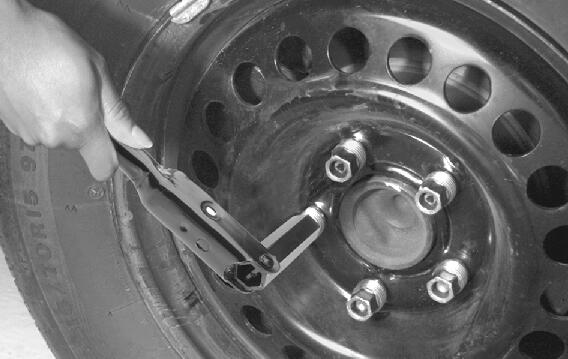
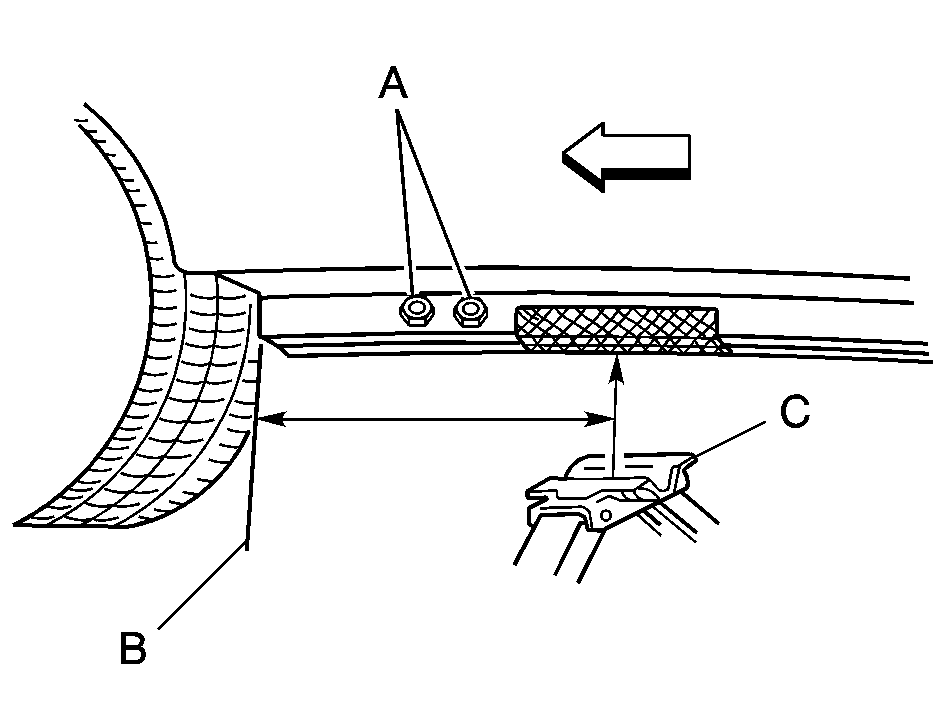
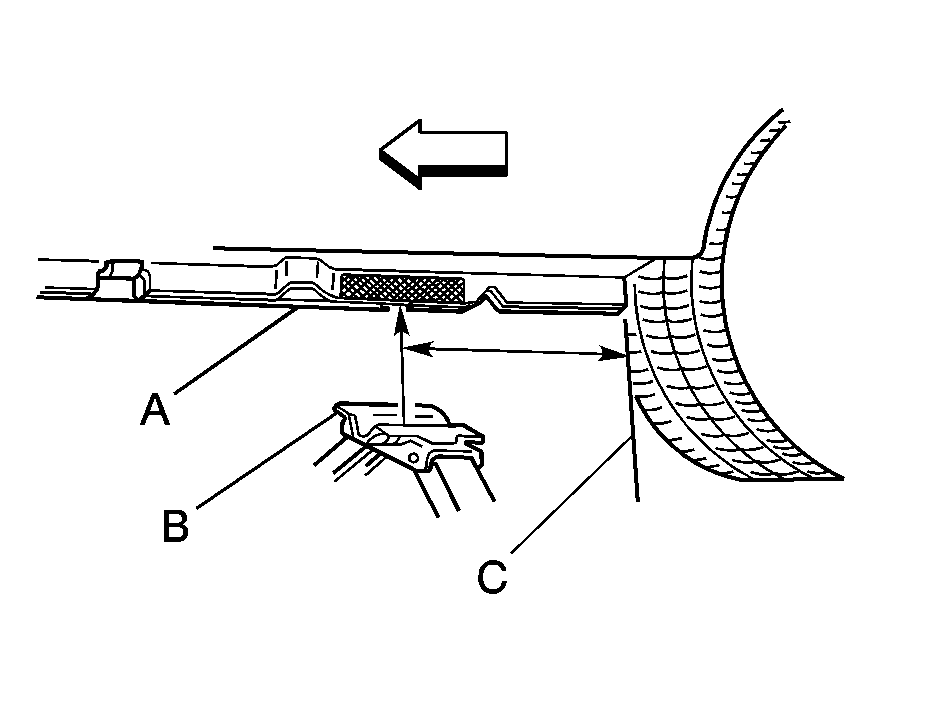
Caution: Getting under a vehicle when it is jacked up is dangerous. If the vehicle slips off the jack you could be badly injured or killed. Never get under a vehicle when it is supported only by a jack.
Caution: Raising your vehicle with the jack improperly positioned can damage the vehicle and even make the vehicle fall. To help avoid personal injury and vehicle damage, be sure to fit the jack lift head into the proper location before raising the vehicle.
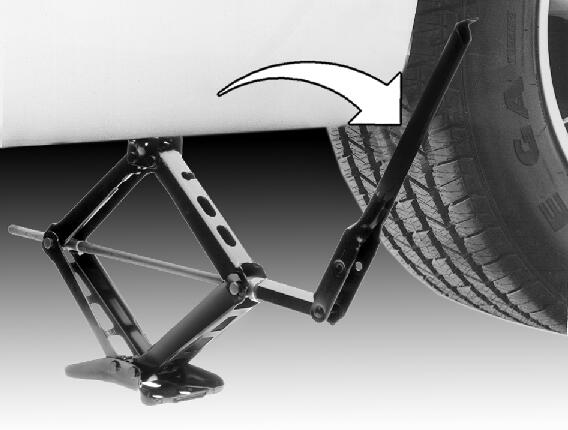
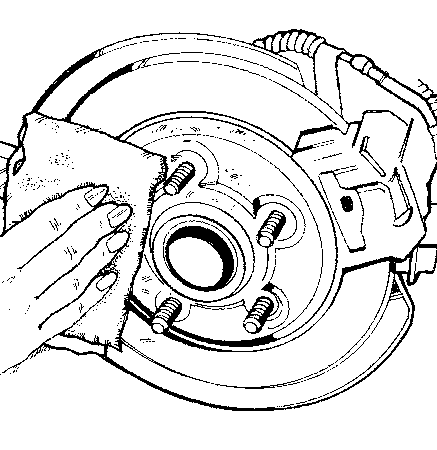
Caution: Rust or dirt on a wheel or other parts to which it is fastened, can make the wheel nuts become loose and eventually the wheel could come off and cause a crash. Always remove all rust and dirt from wheels and other parts.
Caution: Never use oil or grease on bolts or nuts because the nuts might come loose. The vehicle's wheel could fall off, causing a crash.
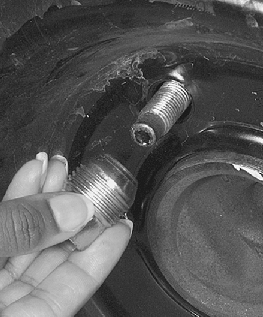
Put the wheel nuts back on with the rounded end of the nuts toward the wheel. Tighten each nut by hand until the wheel is held against the hub.
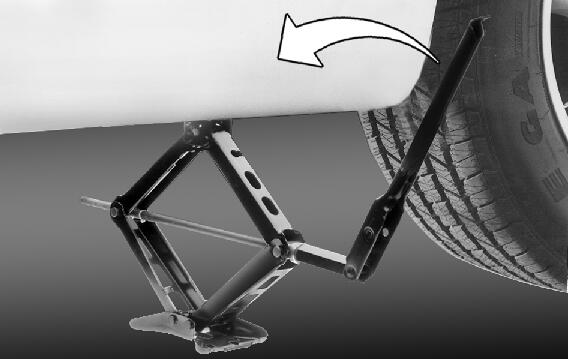
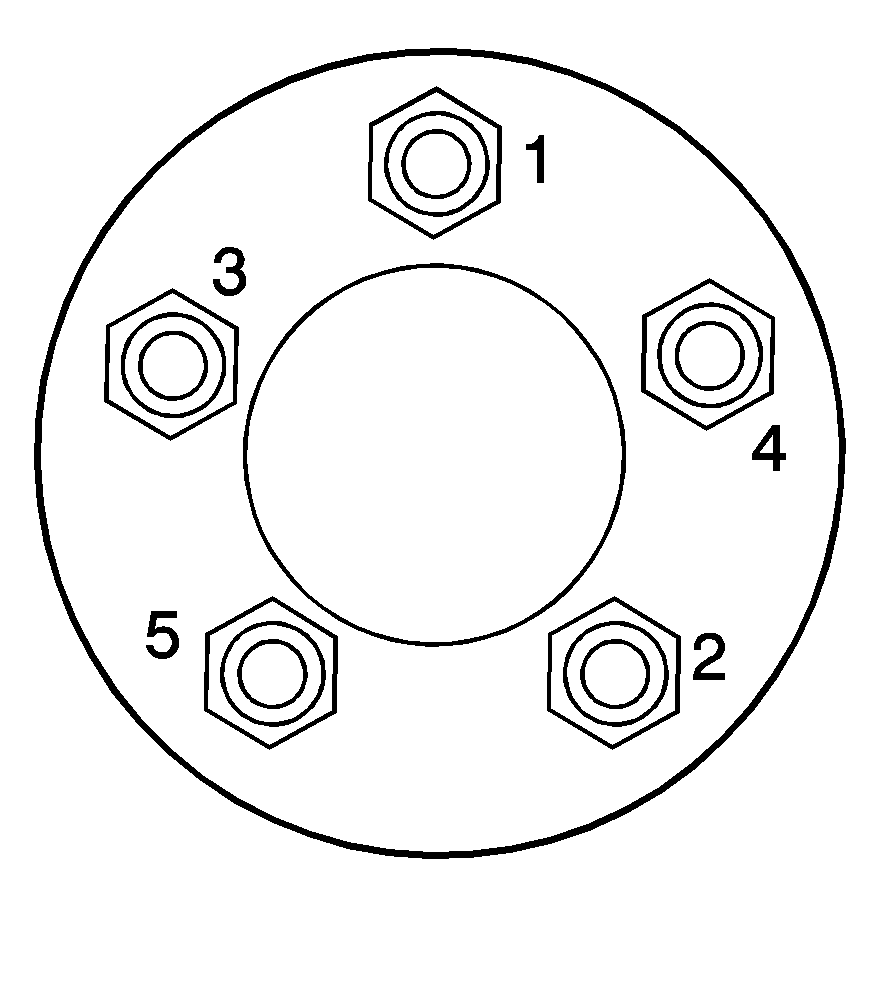
Caution: Incorrect or improperly tightened wheel nuts can cause the wheel to come loose and even come off. This could lead to a crash. If you have to replace them, be sure to get new original equipment wheel nuts. Stop somewhere as soon as you can and have the nuts tightened with a torque wrench to the proper torque specification. See Capacities and Specifications for wheel nut torque specification.
Notice: Improperly tightened wheel nuts can lead to brake pulsation and rotor damage. To avoid expensive brake repairs, evenly tighten the wheel nuts in the proper sequence and to the proper torque specification. See Capacities and Specifications for the wheel nut torque specification.
Do not try to put the wheel cover on your compact spare tire. It will not fit. Store the wheel cover in the trunk until you have the flat tire repaired or replaced.
Notice: Wheel covers will not fit on your vehicle's compact spare. If you try to put a wheel cover on the compact spare, the cover or the spare could be damaged.
Storing the Flat Tire and Tools
Caution: Storing a jack, a tire, or other equipment in the passenger compartment of the vehicle could cause injury. In a sudden stop or collision, loose equipment could strike someone. Store all these in the proper place.
After the compact spare tire is put on the vehicle, store the flat tire in the trunk. Use the following procedure to secure the flat tire in the trunk.
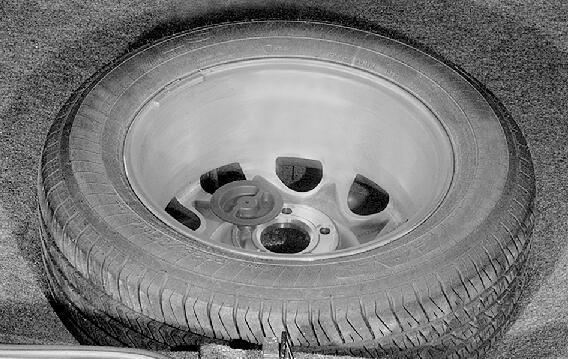
When storing a full-size tire, use the extension with the protector, located in the foam holder, to help avoid wheel surface damage. To store a full-size tire, place the tire valve stem facing down, and then remove the protector and attach the retainer securely. Store the cover as far forward as possible.
Storing the Spare Tire and Tools
When storing a compact spare tire in the trunk, put the protector/guide back in the foam holder.
Caution: Storing a jack, a tire, or other equipment in the passenger compartment of the vehicle could cause injury. In a sudden stop or collision, loose equipment could strike someone. Store all these in the proper place.
The compact spare is for temporary use only. Replace the compact spare tire with a full-size tire as soon as you can. See Compact Spare Tire . See the storage instructions label to return the compact spare to the trunk properly.
Be sure to calibrate low tire inflation system after you replace the compact spare tire with a full-sized tire. See Inflation - Tire Pressure .

Retainer
Cover
Compact Spare Tire
Nut
Jack
Wheel Wrench
Extension and Protector
Bolt Screw
Foam Holder
